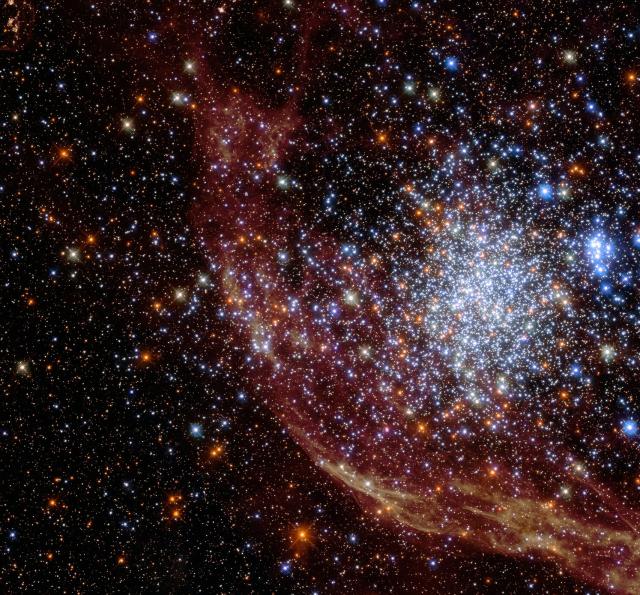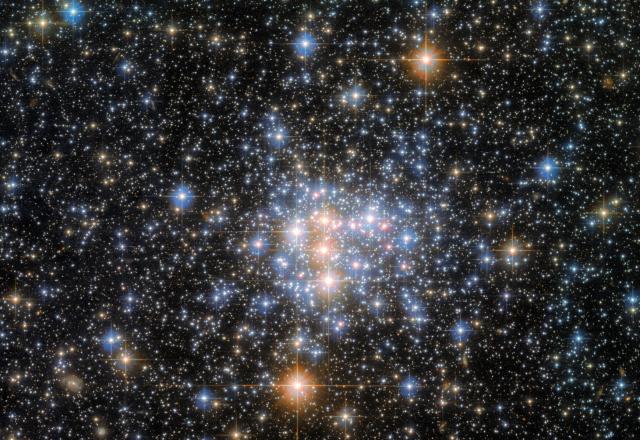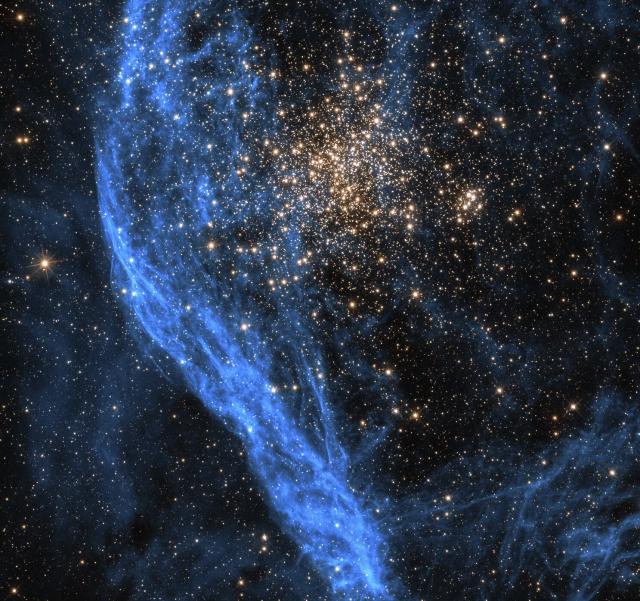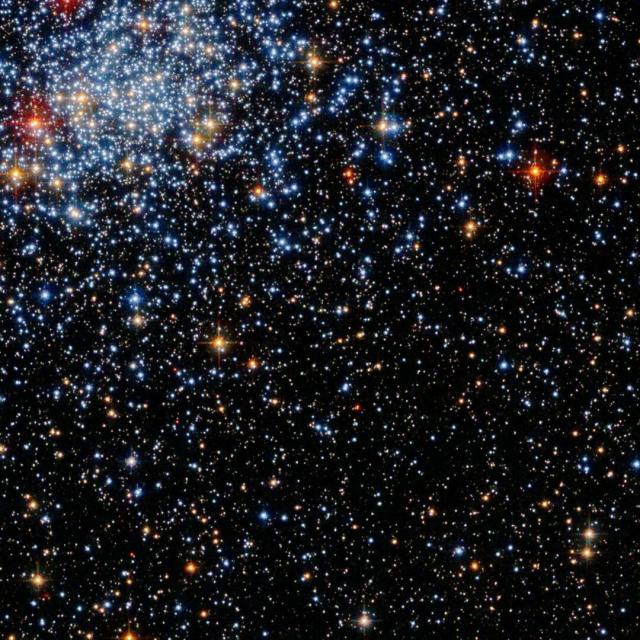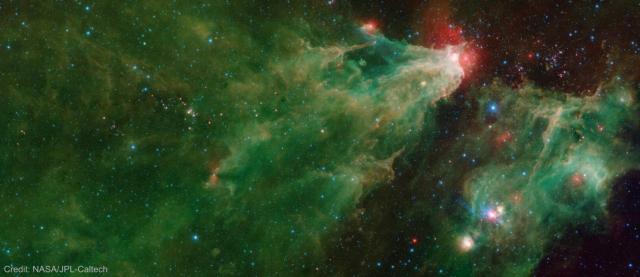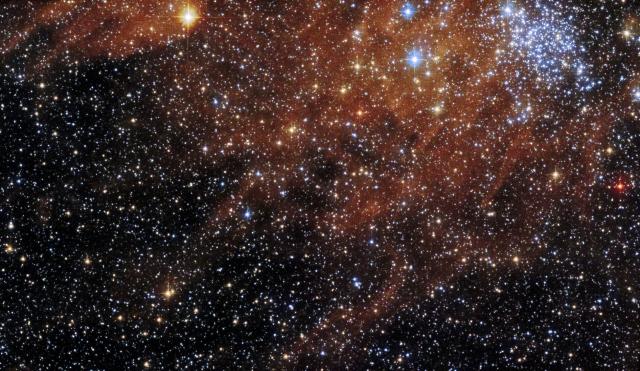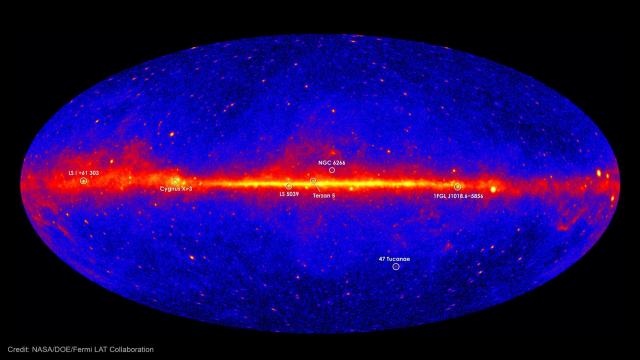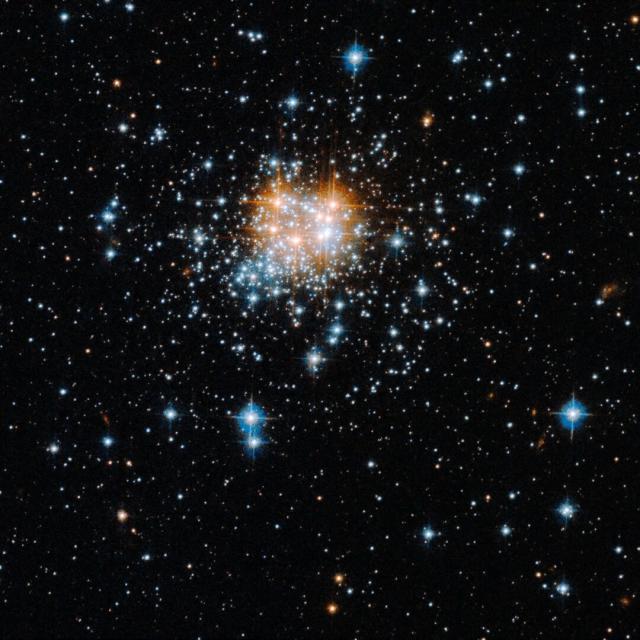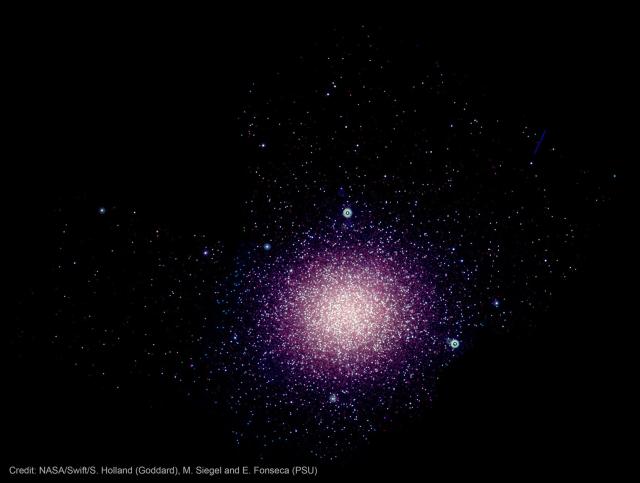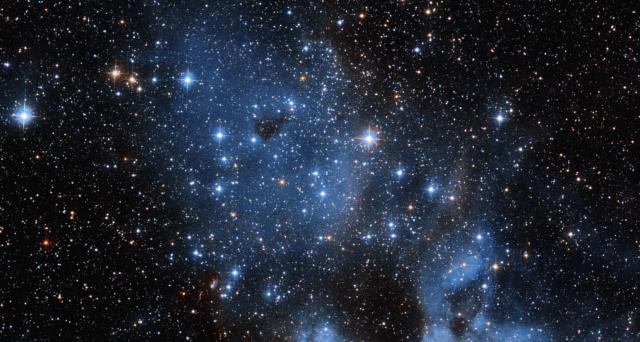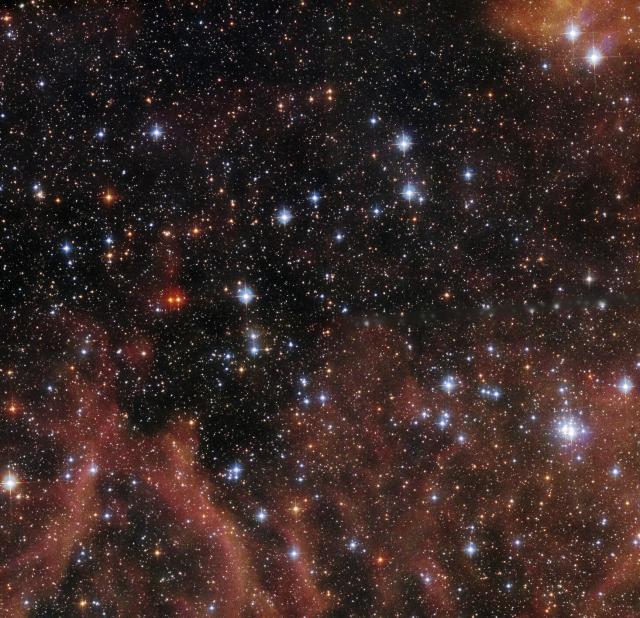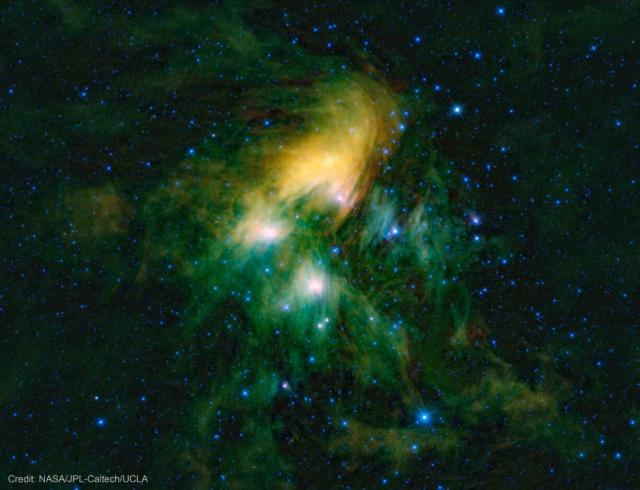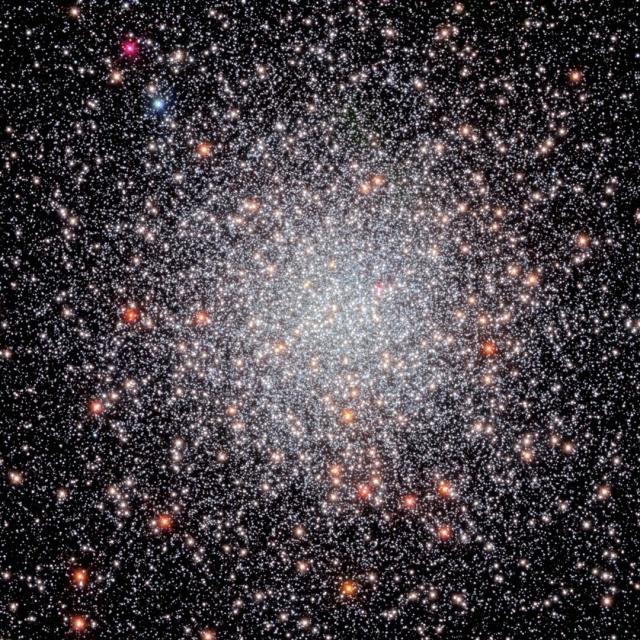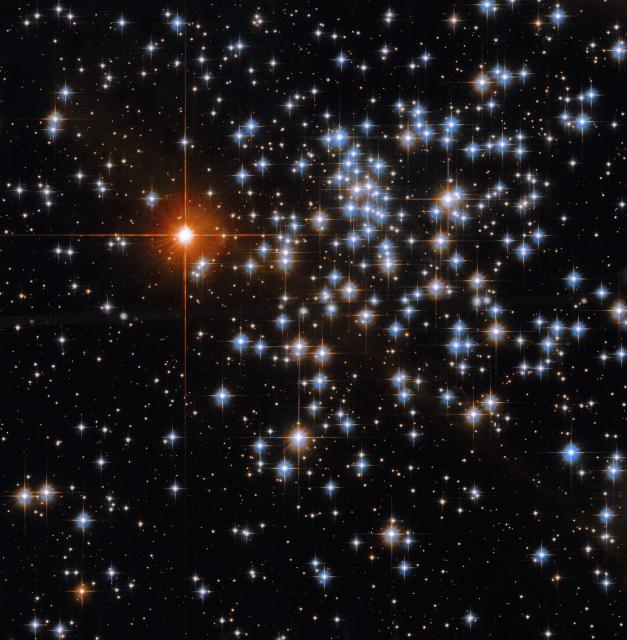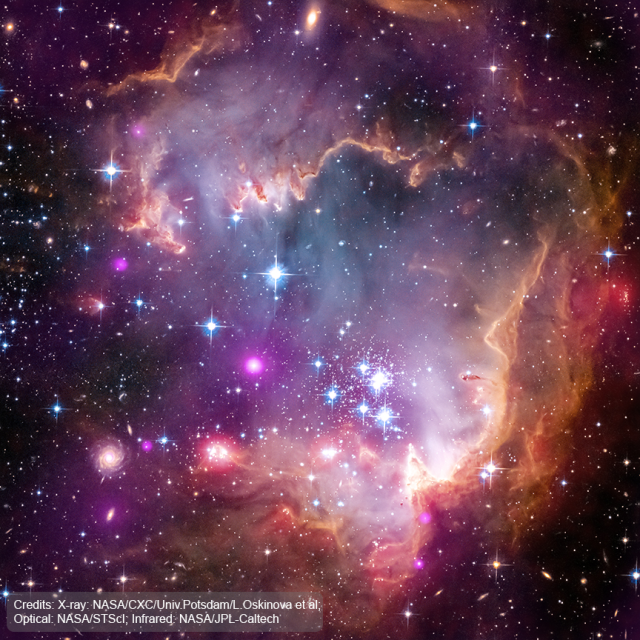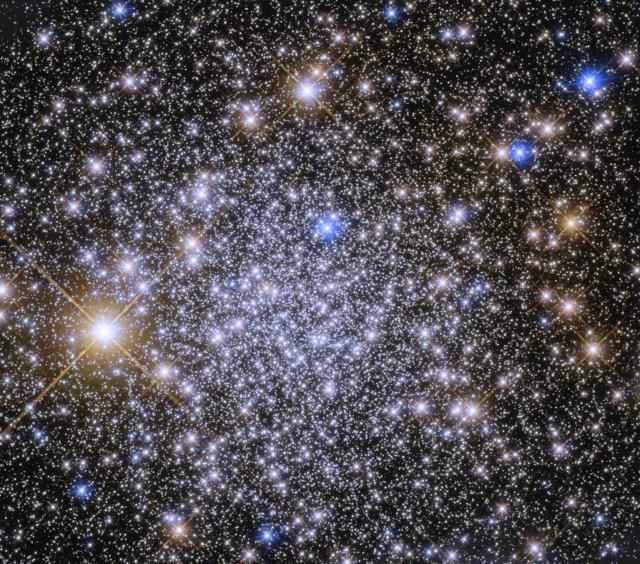Search
Items tagged with: starrysights
Over the past couple weeks, Hubble explored #StarrySights! ✨
These new Hubble images showcase the beauty, science, and cosmic activity that star clusters contain.
Hungry for more? Check out Hubble's star cluster Flickr album: go.nasa.gov/3UKRPXy
#Hubble
Hubble's Star Clusters
A collection of star clusters imaged by the Hubble Space TelescopeNASA Hubble Space Telescope (Flickr)
Now for the grand #StarrySights finale!
The last image in our star cluster celebration shows NGC 1850, about 160,000 light-years away.
It includes ultraviolet observations, which are ideal for detecting light from the hottest and youngest stars, as seen in this luminous view.
#Hubble
"Small" but mighty!
Inside the Small Magellanic Cloud, a satellite galaxy to our Milky Way, is the star cluster NGC 376.
Seen in this #HubbleFriday view, NGC 376 is made of stars that are loosely bound together by gravity: go.nasa.gov/3BmGKoN
#StarrySights
#Hubble
Hubble Captures a Glittering Neighbor
This image from the NASA/ESA Hubble Space Telescope captures a small portion of the Small Magellanic Cloud.Andrea Gianopoulos (NASA)
A #StarrySights stunner! 😍
Welcome to NGC 1850, a star cluster about 160,000 light-years away in a satellite galaxy to our own Milky Way, known as the Large Magellanic Cloud.
Read more: go.nasa.gov/3VIoe2u
#Hubble
Hubble Captures Dual Views of an Unusual Star Cluster
While these two images may look dazzlingly different, they are actually pictures of the same cosmic object: NGC 1850.Andrea Gianopoulos (NASA)
Shine bright like NGC 2031 💎
Hubble's next #StarrySights image shows a cluster that resides about 150,000 light-years from Earth in an extremely dense region of the Large Magellanic Cloud, which is a satellite galaxy of our own Milky Way.
For more: go.nasa.gov/3Hgfc8z
#Hubble
Hubble Beholds Brilliant Blue Star Cluster
In the top left corner of this starry sight, the globular cluster NGC 2031 shines brilliantly.Andrea Gianopoulos (NASA)
#NASAUniverse
NASA's Spitzer Captures Stellar Family Portrait
The evolution of stellar families - born from the same clumps of gas and dust - is just some of what's on display in this sweeping image.NASA Jet Propulsion Laboratory (JPL)
The latest of our #StarrySights is tucked away in the top right corner of this new Hubble image!
KMHK 1231 is an open star cluster surrounded by plumes of crimson gas and dust where new stars may someday form.
Learn more: go.nasa.gov/3Uzftq3
#Hubble
Hubble Spots Bright Splash of Stars Amid Ripples of Gas and Dust
Open cluster KMHK 1231 is a group of stars loosely bound by gravity. Seen in the upper left of this Hubble Space Telescope image, this cluster in the Large Magellanic Cloud is surrounded by a crimson nebula of gas and dust extending both to the right…Andrea Gianopoulos (NASA)
#NASAUniverse
Let’s go supergiant spotting!
This new #StarrySights image shows NGC 2002, an open star cluster 30 light-years across.
At its center, you can spy red supergiants – massive stars that are fusing helium after exhausting their hydrogen fuel: go.nasa.gov/3isScZs
#Hubble
Hubble Observes an Outstanding Open Cluster
A twinkling group of stars dominates the center of this image. NGC 2002 is an open star cluster that resides roughly 160,000 light-years away from Earth in the Large Magellanic Cloud, a satellite galaxy of our Milky Way containing numerous star-formi…Andrea Gianopoulos (NASA)
#StarrySights & starry sounds!
This is a data sonification of the star cluster Caldwell 73. Scientists assigned sounds to different aspects of the image for a new way of experiencing the information in it!
Listen to more sonifications: go.nasa.gov/3Vs7IUa
#Hubble
Explore - From Space to Sound
NASA.gov brings you the latest images, videos and news from America's space agency. Get the latest updates on NASA missions, watch NASA TV live, and learn about our quest to reveal the unknown and benefit all humankind.NASA
#NASAUniverse
NASA - An Image Gallery Gift from NASA's Swift
The Swift team has selected more than 100 images to help celebrate eight years of operations of the satellite's Ultraviolet/Optical Telescope.go.nasa.gov
Our next #StarrySights image shows a cosmic youngster... at a whopping 10 million years old!
NGC 1858 is both an open cluster and an emission nebula. Astronomers believe that star formation within this cluster is ongoing or has very recently occurred: go.nasa.gov/3FnGAjI
#Hubble
Hubble Spies Emission Nebula-Star Cluster Duo
This whole collection is NGC 1858, an open star cluster in the northwest region of the Large Magellanic Cloud, a satellite galaxy of our Milky Way that boasts an abundance of star-forming regions.Andrea Gianopoulos (NASA)
Ready for more #StarrySights? 🌟
This newly released Hubble image shows the open star cluster BSDL 2757. Bright, blue white stars pierce through the rusty-red tones of gas and dust clouds.
Discover more: go.nasa.gov/3VoJNoF
#Hubble
Hubble Views a Cloud-Filled, Starry Scene
Bright, blue-white stars of the open cluster BSDL 2757 pierce through the rusty-red tones of gas and dust clouds in this NASA Hubble Space Telescope image.Andrea Gianopoulos (NASA)
Globular star clusters are beautiful to look at, but what exactly are they?
Find out in this #StarrySights science lesson!
#Hubble
#NASAUniverse
Seven Sisters Get WISE
This image shows the famous Pleiades cluster of stars as seen through the eyes of NASA's Wide-field Infrared Survey Explorer; they are what astronomers call an open cluster of stars, loosely bound to each other to eventually go their separate ways.NASA Jet Propulsion Laboratory (JPL)
Hello, NGC 6440! 🤩
This newly released Hubble #StarrySights image shows a globular cluster located about 28,000 light-years away in the constellation Sagittarius.
Explore more: go.nasa.gov/3OMKPIo
#Hubble
Hubble Captures a Swarm of Stars
Looking like a glittering swarm of buzzing bees, the stars of globular cluster NGC 6440 shine brightly in this NASA Hubble Space Telescope image. Located some 28,000 light-years away in the constellation Sagittarius, the archer.Andrea Gianopoulos (NASA)
Sonified stars ⭐🎵
This sonification brings an image of the star cluster Pismis 24 to life through sound. Scientists assigned pitches to elements of the image so we can experience its data in a new way!
More: nasa.gov/content/explore-from-…
#StarrySights
#Hubble
Explore - From Space to Sound
NASA.gov brings you the latest images, videos and news from America's space agency. Get the latest updates on NASA missions, watch NASA TV live, and learn about our quest to reveal the unknown and benefit all humankind.NASA
Twinkle, twinkle many stars…
This new Hubble image features NGC 2660, an open star cluster in the constellation Vela.
Find out more about this new Hubble #StarrySights image: go.nasa.gov/3EOxg6U
#Hubble
Hubble Spies Sparkling Spray of Stars in NGC 2660
This glittering group of stars, shining through the darkness like sparks left behind by a firework, is NGC 2660 in the constellation Vela, best viewed in the southern sky.Andrea Gianopoulos (NASA)
#NASAUniverse
Welcome, Hubble’s first new #StarrySights image!
This glittering gathering of stars is Pismis 26, a globular cluster located 23,000 light-years away. Many thousands of stars gleam within this cluster, which scientists estimate to be 12 billion years old: go.nasa.gov/3gKQ3rJ
#Hubble
Hubble Glimpses a Glittering Gathering of Stars
This glittering gathering of stars is Pismis 26, a globular star cluster located about 23,000 light-years away.Andrea Gianopoulos (NASA)
Time to take in some #StarrySights!
Over the next couple weeks, we'll be exploring Hubble views of different types of star clusters. Find out more: go.nasa.gov/3gNrNFf
Here's a quick guide for star cluster categories ⬇️
#Hubble
Discoveries - Hubble's Star Clusters
NASA.gov brings you the latest images, videos and news from America's space agency. Get the latest updates on NASA missions, watch NASA TV live, and learn about our quest to reveal the unknown and benefit all humankind.NASA
Coming soon to a screen near you! ⭐
Starting on Monday, join us for two weeks of *stellar* star cluster content! New Hubble images, videos, and more are headed your way.
Get ready to explore #StarrySights from Hubble! Get ready here: go.nasa.gov/3ALBoDs
#Hubble
Discoveries - Hubble's Star Clusters
NASA.gov brings you the latest images, videos and news from America's space agency. Get the latest updates on NASA missions, watch NASA TV live, and learn about our quest to reveal the unknown and benefit all humankind.NASA

